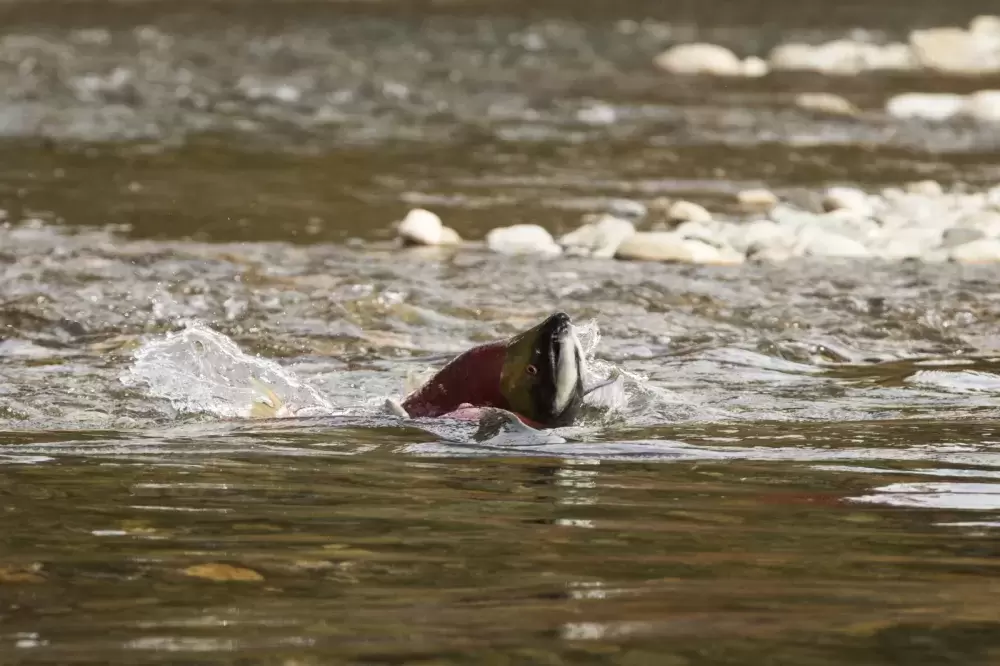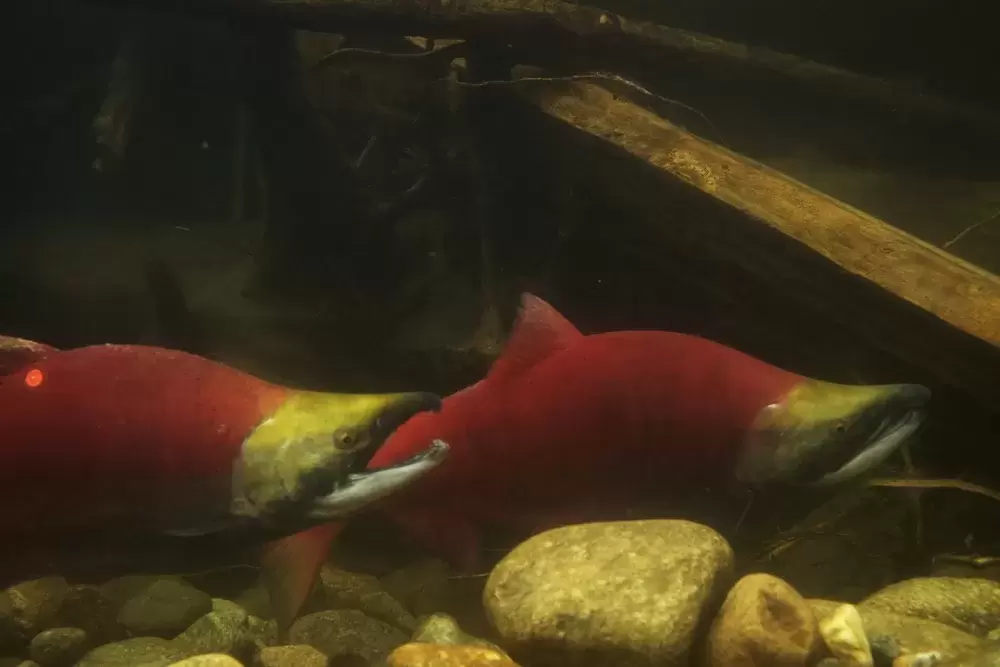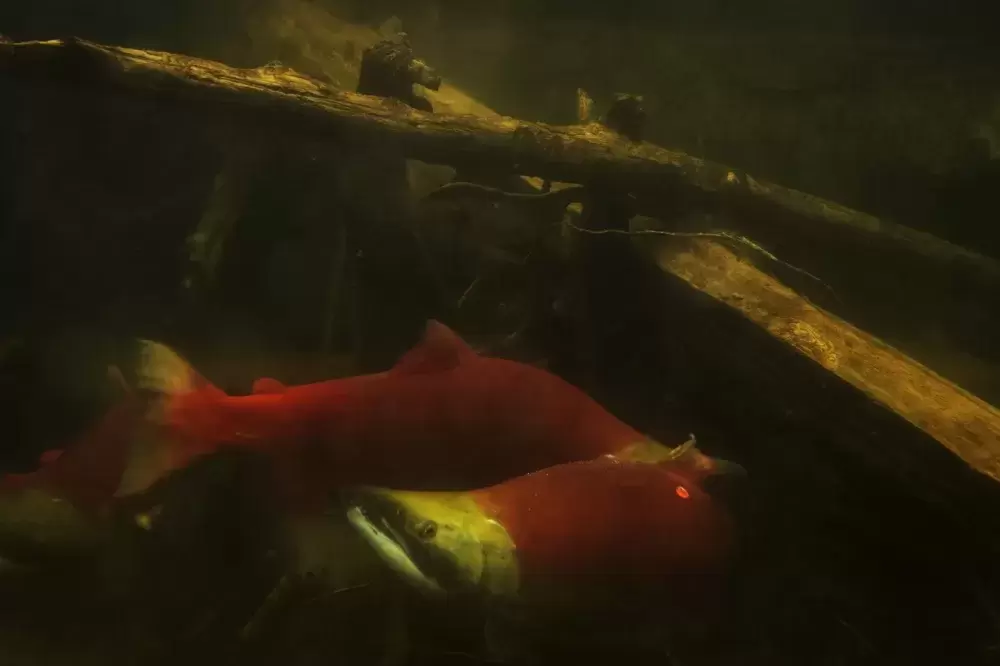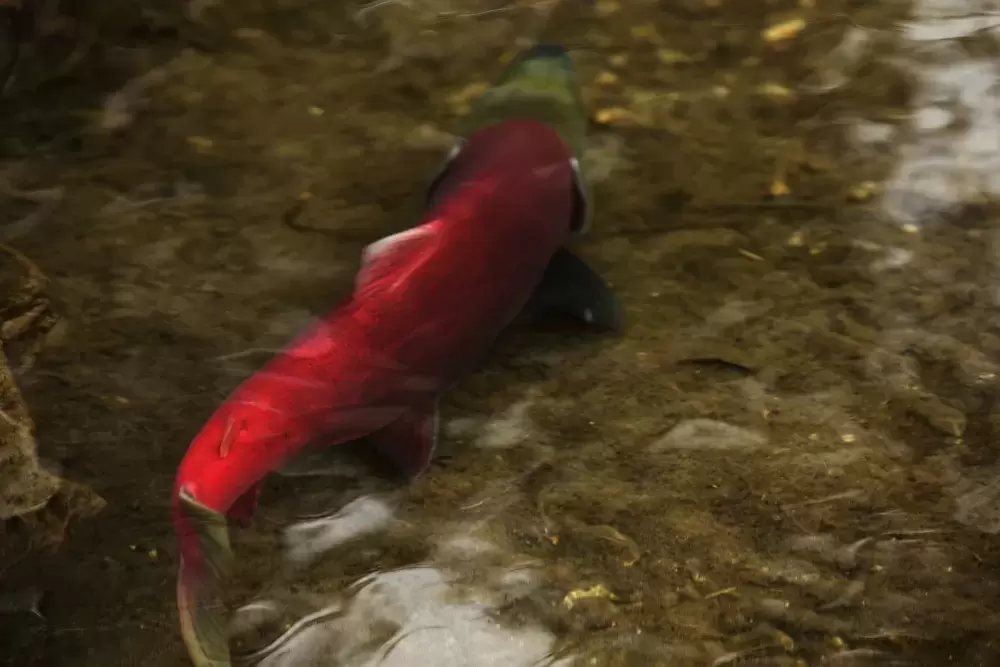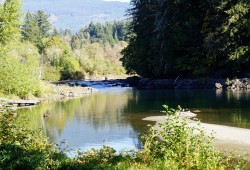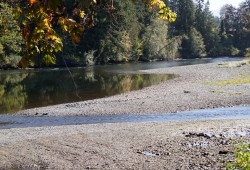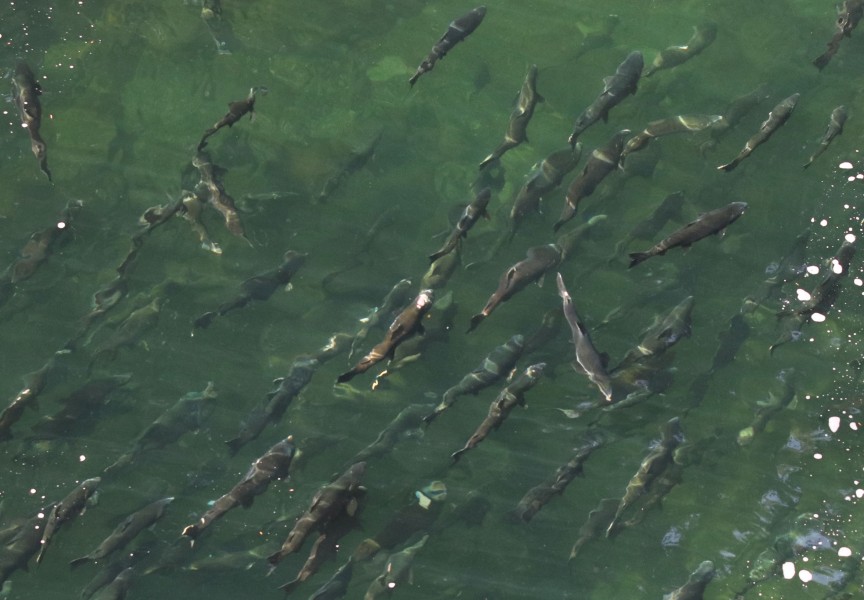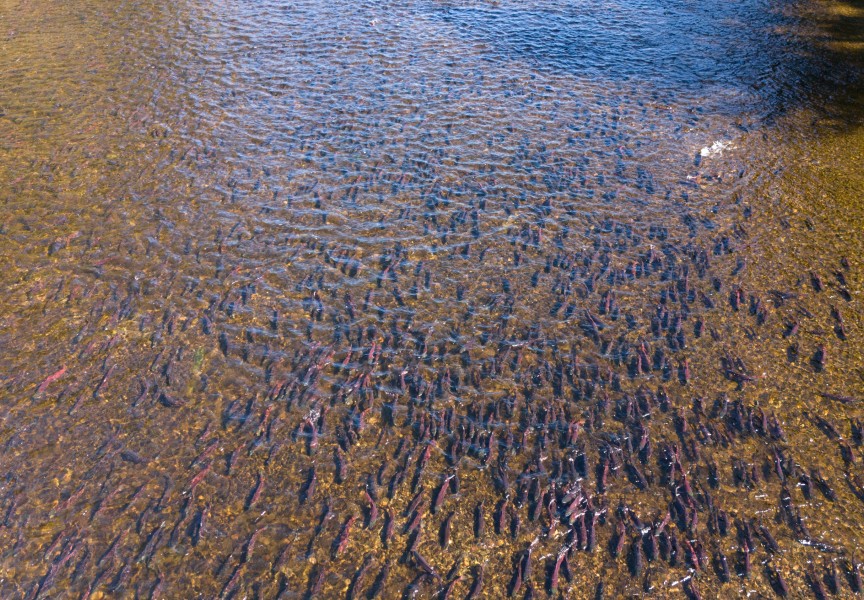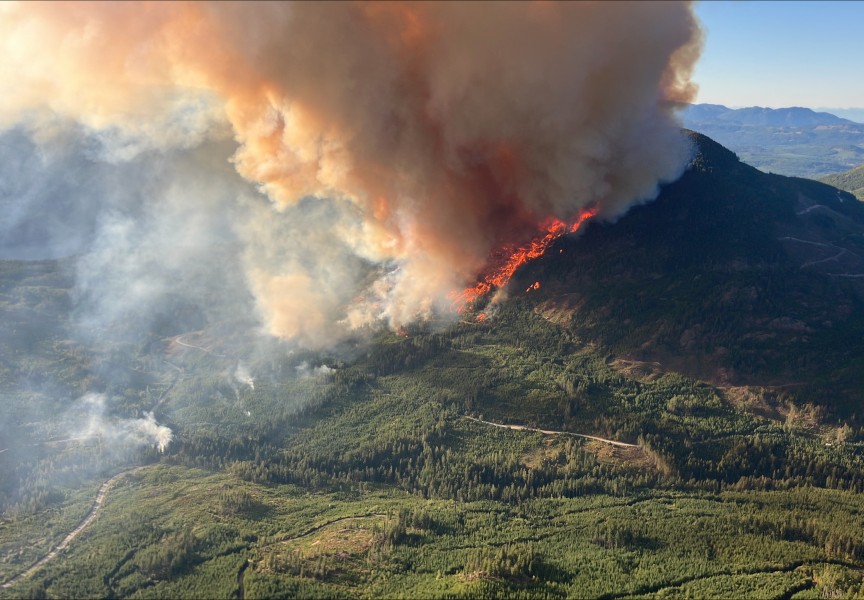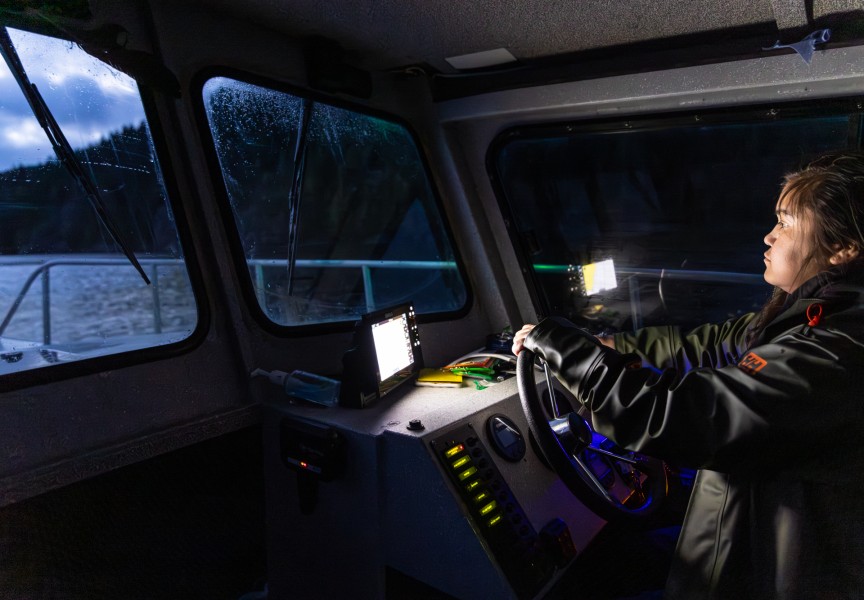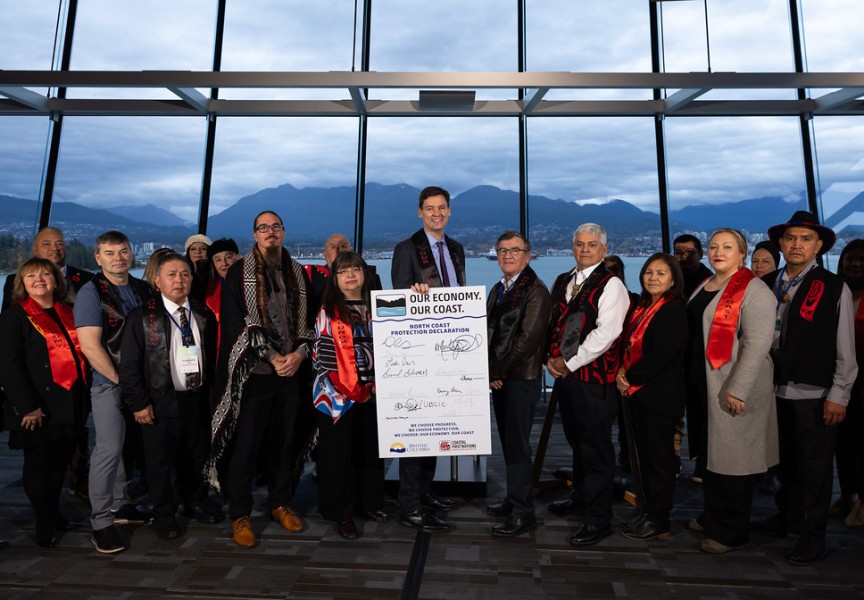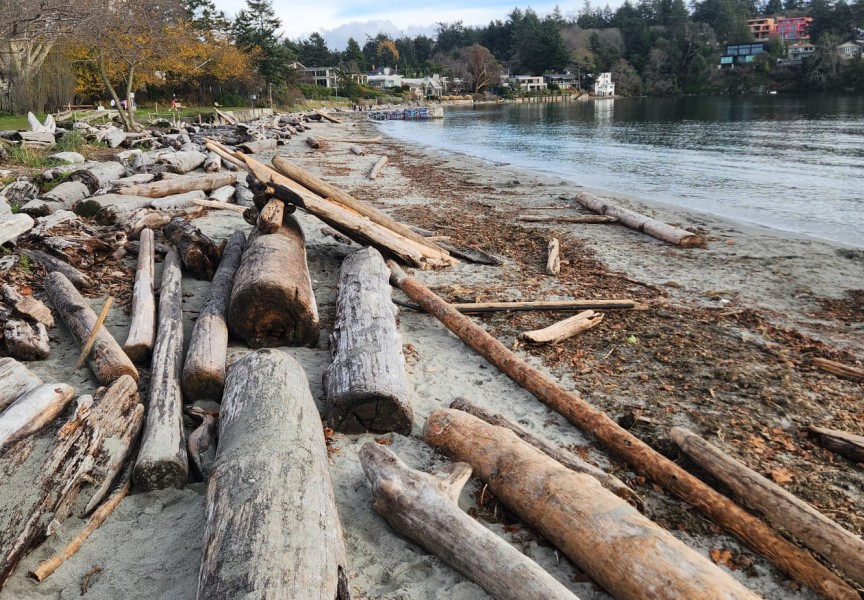With little to no rainfall occurring over the past five weeks, the west coast of Vancouver Island has now reached Drought Level 4, putting salmon at risk of decay.
According to the Province of B.C., at Drought Level 4 conditions are extremely dry and adverse effects to socio-economic or ecosystem values are likely.
Areas under Drought Level 4 include the Fort Nelson basin, the Sunshine Coast basin, Lower Mainland basin and the east and west Vancouver Island.
The province’s extremely dry and hot conditions are causing negative impacts for some wildlife. Tens of thousands of salmon recently turned up dead at the bottom of a dry creek in Bella Bella.
“I’m not aware of similar mass die-offs on Vancouver Island, though it is certainly a possibility if dry conditions persist,” said Katrina Connors, director of the Salmon Watersheds Program, Pacific Salmon Foundation. “Many smaller salmon-bearing streams on Vancouver Island are experiencing low water conditions as a result of the prolonged dry conditions.”
Connors said persistent dry conditions have resulted in a complete lack of summer rainfall recharge that is needed to keep smaller streams flowing. She said low water levels mean warmer streams with less oxygen, which can be deadly for cold water fish like salmon.
“Drought conditions not only affect the salmon that are already in these streams preparing to spawn, but can also prevent salmon from even reaching their spawning areas,” Connors said. “Salmon wait in estuaries and lakes for environmental ‘cues’ to enter their spawning areas - cues like increasing flows and cool water. But that’s not happening this year, and in some places salmon are holding waiting to finish their freshwater migration.”
Connors said some examples of where this can be seen this year is in the Adams River, where last week salmon were holding in Shuswap Lake waiting for river temperatures to decrease.
“Water temperatures have been around 18 C, which is above optimal spawning conditions for salmon,” Connors said. “Salmon only have so much energy reserved and they can’t wait around indefinitely to access their spawning habitats. If they wait too long, they might perish before spawning, which would have multi-generational consequences for salmon populations.”
According to Connors, many smaller salmon-bearing streams on Vancouver Island are experiencing low water conditions as a result of the prolonged dry conditions. For example, the Quinsam River near Campbell River and the Ucona River near the town of Gold River are experiencing very low water levels.
“In Union Bay near the Comox Valley, a PSF staff member has recently discovered 30-50 juvenile salmon trapped in a couple of small pools that have disconnected from a stream that has completely run dry,” Connors said. “With no rain in the long-term forecast and the full moon now past, which would bring in the high tides that would connect these pools to the estuary, these salmon risk dying.”
Connors added that Chinook salmon on the east coast of Vancouver Island have already been identified as a conservation concern by DFO and by the Committee on the Status of Endangered Wildlife in Canada. These additional stresses can make their situation worse.
In the Alberni Valley, Dave Rolston, Tseshaht First Nation’s fisheries manger, says McCoy Lake watershed has seen the most severe impact from the drought.
“With respect to drought, with respect to water flow, the McCoy Lake watershed doesn’t have the buffer that some of the other places have with respect to aquifers,” Rolston said. “All the [creeks] that feed into the lake, most of them are dry. Heath creek’s not too bad, it’s still got a little bit of flow, but everything else is pretty much completely dry.”
Rolston said he estimates that half of the juvenile salmon that were in the McCoy Lake watershed a couple months ago have now been lost. He said since the drought, no adult coho are getting to the McCoy Lake watershed to spawn, and he believes they will be the most impacted species of salmon this year.
“We’re seeing impacts I would say mostly in the coho. Chum are starting to come in now, there’s a little bit of chum but they typically start to spawn near the mouth of the Somass, so hopefully they’re not going to be impacted,” Rolston said. “The chinook…a good chunk of them got up the Stamp before this happened and then they seemed to be able to make it up the Stamp still.”
Rolston said it’s still to be determined if the sockeye will be affected by the drought, but if forecasted rain comes this weekend they should be okay.
“It’s time for them to spawn, so hopefully we will get some rain and that will solve itself,” Rolston said. “I’m hearing from other regions that this is the most severe drought we’ve had in 100 years. I tend to believe it.”
Rolston added that Roger Creek and Dry Creek are also “bone dry” which has caused fish to die in those areas as well.
Mike McDermid, director of Seafood and Fisheries for Ocean Wise, said the prolonged drought has definitely had an impact on salmon returning now.
“(Stream) Temperatures of 17-18 degrees C begin to stress the fish increasing pre-spawning mortality, and at 20 degrees become lethal,” McDermid said. “Low water levels can leave critical spawning beds dry and create in-river barriers to salmon migration leading to die offs like we saw in the Neekas in Bella Bella.”
McDermid said salmon are fairly good at holding in deeper waters of lakes or at the mouths of rivers for the right conditions before continuing their migration to the spawning beds, however that ability can be limited and large aggregations of fish can cause stress, leading to higher mortality.
“We are certainly seeing this on Vancouver Island,” McDermid said. “Salmon are currently holding in Alberni Inlet because of the low water levels and the City of Nanaimo had to release water from two reservoirs into the streams to support the returning salmon.”
Salmon, McDermid said, are intrinsically linked to a healthy coastal ecosystem both on land and in the water. They are predators of small fishes and planktonic organisms and are a key food source for many larger fish and mammals, like the threatened resident killer whales.
“What cannot be understated is that they are intrinsically linked to people as well. Coastal peoples have relied on the returning salmon for thousands of years and this could have devastating impacts on those communities that live upriver and rely on the salmon returning today,” McDermid said. “We are likely to feel the effects of climate change more and more and events like this are more likely to occur, so we need to take this into consideration in our management decisions to ensure the future health of our coastal ecosystems.”

